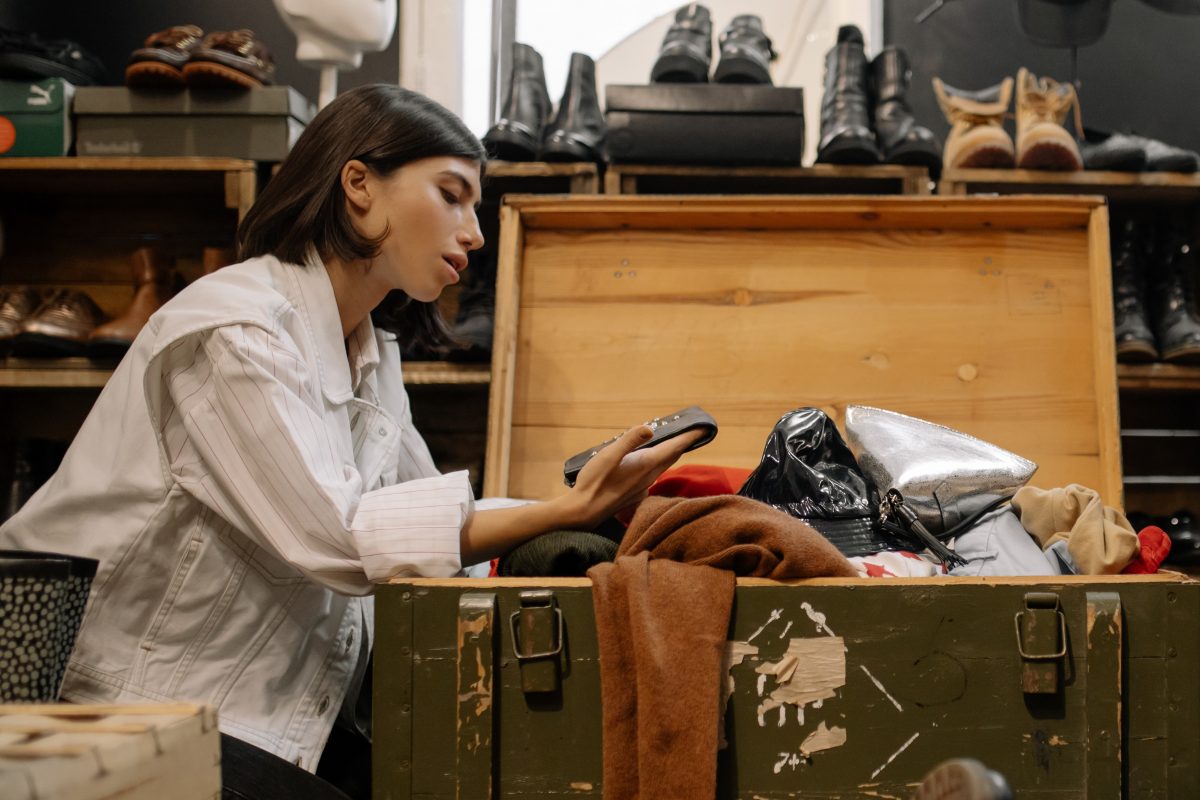
Between the influence of social media and the dangerous rise in fast fashion, trends are going in and out of style faster than ever. The increased speed of the fashion cycle benefits retailers by causing consumers to buy more in order to keep up with trends. Not only is this harmful to the consumer’s bank account but the overconsumption of clothing has terrible repercussions for the environment. Keep reading for tips on how to be sustainable while keeping up with fashion trends, and save some money while you do it.
Shop Second Hand
Shopping Second Hand: Buying pre-owned clothing from retailers or directly from the previous owner.
View this post on Instagram
Any time a new style comes into fashion, you can almost guarantee it was already popular a couple of decades ago. This is known as the 20-year fashion cycle. The best part of this phenomenon is that you can find the newest trends second-hand before retailers can even start producing new items. These vintage pieces are not only less expensive than buying new ones, but they are also likely to be of better quality. Fast fashion is notorious for using cheap materials and cutting corners in production. Higher quality clothing also lasts longer, which will save money and resources in the long run.
Thrift stores are a great place to search for vintage clothing, but there are other options too. Consignment shops are great if you are looking for trendy pieces or a particular style. You can also exchange your old clothes for money or store credit. For people who are fans of online shopping, online resellers and thrift stores are becoming increasingly popular. Websites such as Depop and ThredUp make it easy for people to buy and sell second-hand without ever leaving their homes.
Upcycle
Upcycling: Taking a product and creating something of greater value or use.
Upcycling is a fun way to invigorate new life into old clothing. This can be done with clothes found second-hand, hand-me-downs, and clothes you no longer wear. There are many online tutorials for completely transforming old clothes where people of all levels of skill can get in on the fun. Even something as simple as cutting a pair of pants into shorts or cropping a shirt can vastly improve your look. Upcycling isn’t just about changing the shape of your clothes. Color is a huge factor too.
Colors go in and out of style just as quickly as clothing items. Dying a piece of clothing a new, trendy color can really bring it back into the mainstream. Tie-dying is also a fun way to achieve a new look and is a great activity to do with friends or family. Artists can also show off their skill by painting designs on jeans, jackets, shoes, and more. For the less artistically inclined, iron-on transfer paper allows you to put images onto clothing with ease. Whatever method you use, it is remarkable the effect a small change can have on transforming an article of clothing.
Capsule Wardrobe
Capsule Wardrobe: A limited wardrobe of clothes designed to be worn together.

If you are serious about minimizing your carbon footprint, a capsule wardrobe might be for you. This minimalist trend is all about limiting your wardrobe to a few timeless, versatile pieces that can be mixed and matched to create a multitude of outfits. Capsule collections typically include many well-loved basics that look good together and a few statement pieces that really make the outfits pop.
Given that the majority of people only wear 20% of their wardrobe regularly, it makes sense to limit your closet to those pieces you keep reaching for. Other benefits of the capsule wardrobe are that it saves you money, makes choosing outfits less complicated, reduces space taken up by clothing, and allows you to invest in higher quality items.
Clothes Swap
Clothes Swap: A gathering where people trade clothes they no longer want.

Clothes swaps are a fun way to experiment with your style and get rid of clothes you no longer wear. It’s a perfect illustration that one person’s trash is another person’s treasure. Local clothes swaps can be advertised using websites like Meetup or dedicated Facebook groups. You can organize a clothes swap yourself on your campus, with your friends, or any group you want. For best results, bring along music, refreshments, and good company. You may find that swaps are a great way to meet new people and make friends. They can also be used to break the ice for a group of new roommates, teammates, or acquaintances.
Shop Consciously
Shopping Consciously: Thinking before you buy.

The combination of micro-trends and retail therapy causes people to impulse buy things they don’t actually want or need. Instead of buying something just because it is a trend, think about whether or not you actually like it. Would you wear it if it wasn’t a trend? Can you imagine yourself wearing it a year from now? There’s nothing wrong with participating in trends, however, hopping onto trends just for the sake of it often ends in regret and abandoned clothing.
Shopping consciously is the most important part of creating a sustainable wardrobe. The amount you consume is just as important as where you get it from. For example, buying huge amounts of clothes from a thrift store and not wearing them is worse than buying one or two fast fashion pieces that you wear all the time. By investing in pieces you see yourself wearing long-term, you not only save money but also contribute to leading a more sustainable life.


